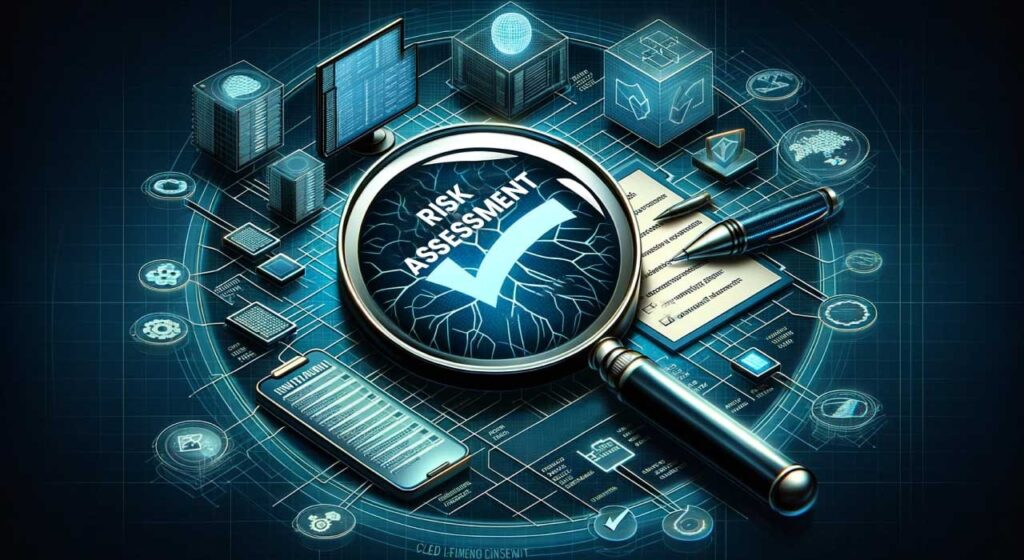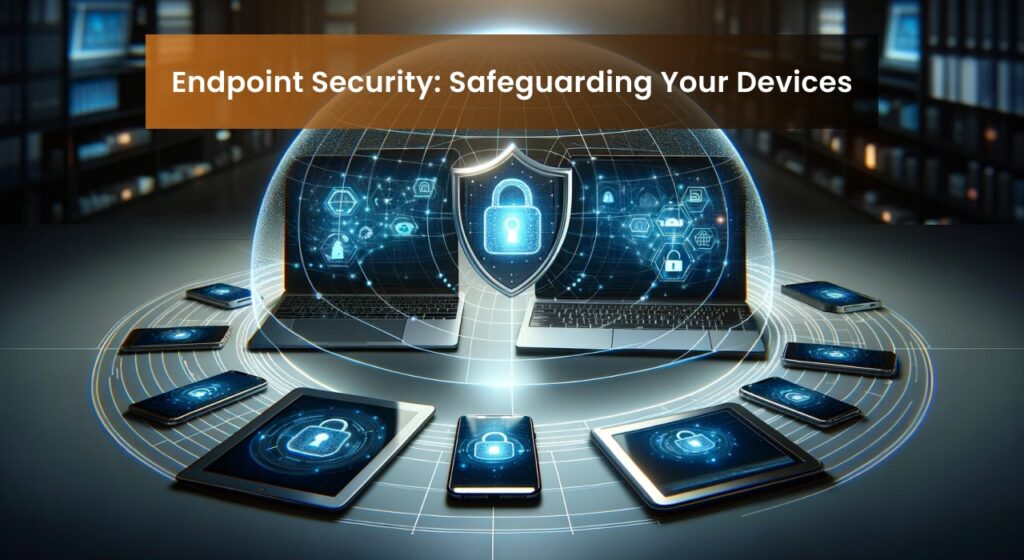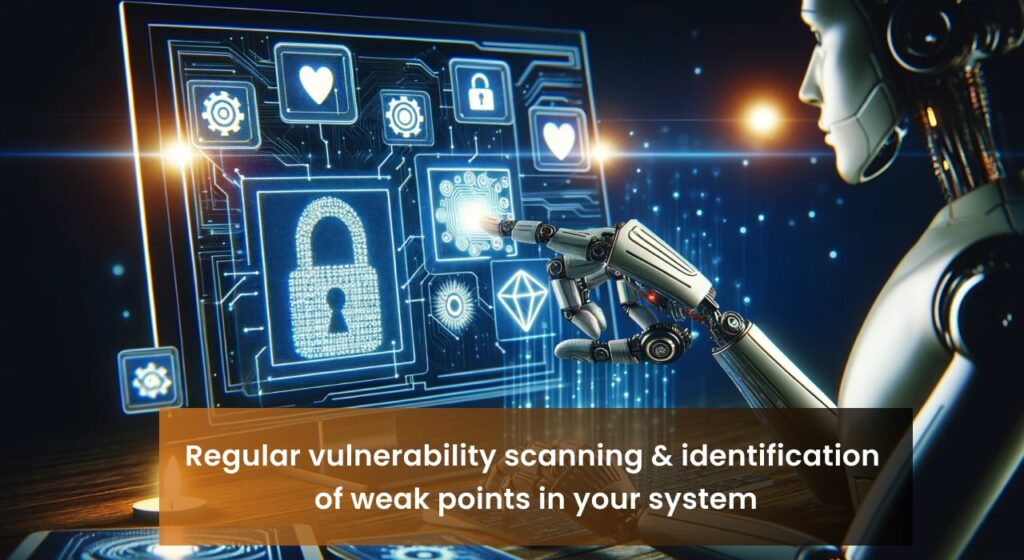
The digital landscape has become a double-edged sword for small businesses. On the one hand, the digital landscape facilitates business expansion and the development of novel ideas. On the other hand, it presents small businesses with the ongoing challenge of defending against cyberattacks. A 2023 report by Verizon found that 43% of all cyberattacks target small businesses, often exploiting their perceived lack of robust security measures. These attacks can have devastating consequences, resulting in compromised customer data, financial losses and operational disruptions.
Imagine a local bakery, seemingly an unlikely target, falling victim to ransomware. Hackers could seize control of their point-of-sale system, encrypting critical data and halting sales. The financial impact could be crippling, forcing them to shut down temporarily or permanently. This scenario, while unfortunate, is not uncommon.
Fortunately, there’s a proactive approach: implementing a cybersecurity solution specifically tailored to the needs of a small business. This article serves as a comprehensive guide, equipping you with the knowledge to choose the most effective solution to safeguard your valuable data, ensure business continuity, and navigate the ever-evolving cybersecurity landscape with confidence.
Understanding Your Cybersecurity Needs

Before diving into the world of cybersecurity solutions, it’s crucial to understand your unique vulnerabilities. Conducting a thorough cybersecurity risk assessment is the first step. This comprehensive evaluation, as outlined by the U.S. Small Business Administration (SBA) (https://www.sba.gov/blog/protect-your-small-business-cybersecurity-attacks), identifies weaknesses within your network and data storage systems. It’s like taking an X-ray of your digital infrastructure, pinpointing areas susceptible to cyberattacks.
Why is a cybersecurity risk assessment so important for small businesses? Small businesses are often perceived as easier targets due to a perceived lack of robust security measures. Hackers exploit these vulnerabilities to launch various attacks, including:
- Phishing Attacks: Deceptive emails or messages designed to trick recipients into revealing sensitive information like passwords or credit card details.
- Malware: Malicious software that infiltrates your systems, potentially stealing data, disrupting operations, or deploying ransomware.
- Ransomware: A particularly disruptive form of malware that encrypts your data, rendering it inaccessible until a ransom is paid.
| Threat | Description | Potential Impact |
|---|---|---|
| Phishing Attacks | Deceptive emails or messages | Data breaches, financial losses, reputational damage |
| Malware | Malicious software | Data breaches, system disruptions, operational downtime |
| Ransomware | Data-encrypting malware | Data loss, financial losses, operational paralysis |
By understanding these threats and conducting a security gap analysis, you gain valuable insights into areas requiring immediate attention. This analysis goes beyond simply identifying vulnerabilities; it helps prioritize remediation efforts, ensuring you focus on the most critical security gaps first.
After identifying your vulnerabilities through a security risk assessment, you’ll need to establish clear guidelines and best practices to safeguard your data and minimize the risk of cyberattacks. This is where a well-crafted cybersecurity policy comes into play. To learn more about the essential elements you should include in your cybersecurity policy, read our comprehensive guide: Creating a Cybersecurity Policy for Your Small Business: What to Include.
Essential Features of a Cybersecurity Solution

Having identified your cybersecurity vulnerabilities, it’s time to explore the features offered by potential solutions. Selecting the right one requires careful consideration, as each business has unique needs. Here’s a breakdown of essential features to guide your decision-making process:
- Antivirus and Anti-malware Protection : The first line of defense against malicious software, antivirus and anti-malware programs continuously scan your devices for known threats. Look for solutions offering real-time protection that automatically detects and eliminates viruses, malware, and other harmful programs upon contact. Additionally, prioritize solutions with automatic update functionalities to ensure your defenses remain effective against ever-evolving threats.
- Endpoint Security: In today’s interconnected environment, securing all devices accessing your network is crucial. Endpoint security solutions go beyond traditional antivirus software, providing comprehensive protection for desktops, laptops, tablets, and even mobile devices. These solutions offer features like application control, device encryption, and intrusion detection, safeguarding your entire digital ecosystem from unauthorized access and malicious activity.
- Intrusion Detection and Prevention Systems (IDS/IPS) : Think of IDS/IPS as vigilant guards monitoring your network traffic. An Intrusion Detection System (IDS) continuously scans for suspicious activity, such as unauthorized access attempts or malware downloads. An Intrusion Prevention System (IPS) takes a more proactive approach, actively blocking such attempts before they can compromise your systems.
- Email Security: Email remains a prime target for cyberattacks, particularly phishing scams. Robust email security features are essential for filtering out spam messages, blocking phishing attempts and quarantining emails containing malicious attachments. Consider solutions offering sandboxing technology, which safely analyzes suspicious emails in a virtual environment before they reach your inbox.
- Data Encryption: Data encryption acts as a digital shield, scrambling sensitive information like customer records, financial data, and intellectual property. In the unfortunate event of a data breach, encryption renders the stolen information unreadable, minimizing the potential damage. Look for solutions offering robust encryption algorithms and the ability to encrypt data both at rest (stored on devices) and in transit (being transferred).
- Firewalls: Firewalls act as a barrier between your internal network and the vast expanse of the internet. They control incoming and outgoing traffic, allowing only authorized communication and blocking suspicious activity. Consider solutions offering customizable firewall rules to tailor network access to your specific business needs.
Additional Features to Bolster Your Defenses

Beyond the core features listed above, several additional functionalities can enhance your overall cybersecurity posture:
- Vulnerability Management in Software: Unpatched software applications represent a significant cybersecurity risk, as they can be exploited by cyber attackers. Automated patch management ensures all software applications, operating systems, and firmware are updated with the latest security fixes, effectively patching these vulnerabilities before they can be exploited.
- Vulnerability Scanning: Regular vulnerability scanning identifies weaknesses within your systems, allowing you to prioritize remediation efforts and address critical issues before attackers can leverage them.
- Security Awareness Training: Even the most sophisticated cybersecurity solution can be compromised by human error. Investing in employee training on cybersecurity best practices, such as phishing email identification and strong password hygiene, significantly reduces the risk of human-induced security breaches.
- Incident Response and Recovery: Despite your best efforts, a security incident might occur. Having a well-defined incident response and recovery plan in place ensures a swift and coordinated response to minimize damage and restore normalcy as quickly as possible.
By prioritizing these essential features and considering additional functionalities, you can select a cybersecurity solution that effectively safeguards your small business from the ever-evolving threat landscape. Remember, the “best” solution is the one that aligns with your specific needs and budget, offering the right balance of protection and affordability. Conducting a thorough security gap analysis, as mentioned earlier, will significantly aid you in identifying the most relevant features to prioritize during your selection process.
Additional Considerations
While core features form the foundation of a robust cybersecurity solution, several additional factors warrant consideration when making your final decision.
- Scalability: As your business grows, your cybersecurity needs will inevitably evolve. Look for a solution that can scale seamlessly to accommodate future growth in terms of users, devices, and data storage. A scalable solution ensures your defenses remain effective even as your business expands.
- Ease of Use: A user-friendly solution minimizes the burden on your IT team. Intuitive interfaces and straightforward configuration processes are essential, especially for businesses with limited in-house IT expertise. Consider solutions offering user-friendly dashboards for monitoring security status and readily accessible support resources.
- Compatibility: Ensuring compatibility with your existing infrastructure is crucial. Evaluate if the solution integrates smoothly with your current network architecture, operating systems, and other software applications used within your business. Avoid solutions requiring extensive modifications to your existing setup, as this can be time-consuming and resource-intensive.
- Customer Support and Maintenance: Reliable customer support is vital for addressing any technical issues or security concerns that may arise. Look for solutions offering responsive and knowledgeable support channels, such as phone, email, or live chat. Ongoing maintenance services are also essential, as they ensure the solution remains up-to-date with the latest security patches and threat definitions.
By carefully considering these additional factors alongside the core features, you can select a cybersecurity solution that not only protects your business today but also adapts and grows alongside your future needs.
Comparing and Choosing a Solution
With a comprehensive understanding of essential features and additional considerations, you’re well-equipped to embark on the comparison process. Don’t be afraid to shortlist several potential solutions that align with your budget and specific needs.
Carefully compare the feature sets offered by each vendor, ensuring they address the vulnerabilities identified in your security gap analysis. Evaluate pricing plans, considering not just the upfront cost but also ongoing subscription fees and potential hidden charges.
Investigate the vendor’s reputation within the cybersecurity industry. Look for vendors with a proven track record of providing reliable solutions and exemplary customer support. Reading industry reviews and seeking recommendations from trusted colleagues can be valuable resources during this evaluation stage.
Remember, there’s no “one-size-fits-all” solution in cybersecurity. The ideal choice strikes a balance between robust protection, user-friendliness and affordability for your small business.
Fortunately, numerous free cybersecurity resources are available to assist you on this journey. Government agencies like the U.S. Small Business Administration (SBA) and industry associations often provide valuable guidance and best practices for small businesses navigating the world of cybersecurity. Leveraging these resources alongside the insights gleaned from this article will empower you to make an informed decision and select the cybersecurity solution that best safeguards your valuable data and fosters continued business success.
In today’s digital landscape, a robust cybersecurity posture is no longer optional for businesses of any size. By understanding your vulnerabilities and carefully evaluating features like antivirus protection, endpoint security, and data encryption, you can select a solution that effectively shields your valuable data and operations. Remember, the ideal cybersecurity solution for your small business should align seamlessly with your budget and specific needs.
Taking a proactive approach to cybersecurity empowers you to focus on growth and innovation, minimizing the disruptive impact of cyberattacks. Leverage the free resources available and prioritize ongoing vigilance to ensure your business thrives in the ever-evolving digital age.
Categorized in:
Comments